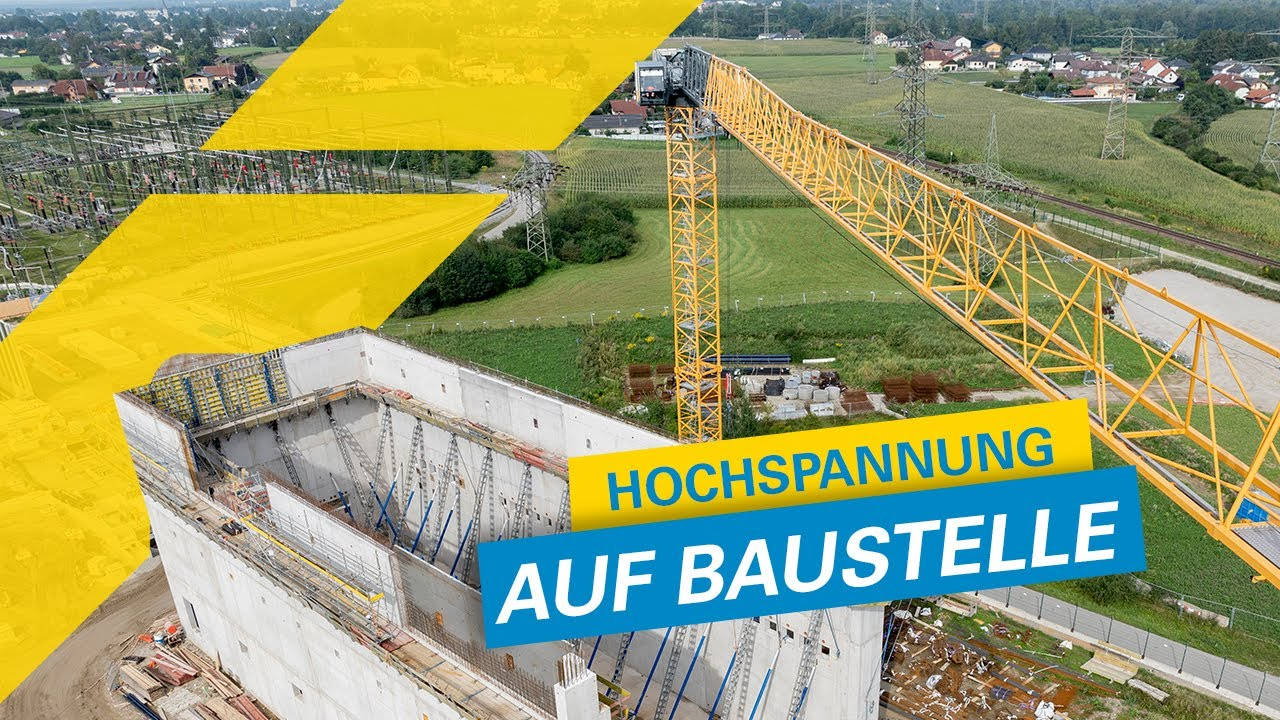Expansion of one of the largest transformer stations in Austria
January 23, 2025 | Lucia Reinsprecht
Austrian hydropower and German wind power are to form a symbiosis in the future, ensuring that both countries are supplied with green electricity. As part of the joint project of the Austrian grid operator Austrian Power Grid (APG) and the German electricity grid operator TenneT, both the node in Altheim, Bavaria, and the main distribution node in St. Peter am Hart, Upper Austria, are being equipped with a new infrastructure and the necessary electricity pylons. “Our specialist staff and our equipment are subject to the strictest safety requirements in this environment,” reports Volker Brand, the Felbermayr project and construction manager in charge. To ensure that the technically highly demanding construction work runs smoothly and safely, the site management conducts a weekly safety walk and a safety expert conducts a safety inspection every two weeks.
“White tank” method
Besides the concreting work for countless equipment supports such as gantries or lightning conductors on the approximately 21,000-square-metre construction site, the construction of a transformer foundation for a 550 MVA grid coupling transformer for 380/220 kilovolts began in November last year. With the excavation of a 30-metre-long, 17-metre-wide and three-metre-deep pit, the Felbermayr team first had to carry out extensive ground improvement work for the foundations of the transformers. “In the process, we excavated and improved around 1,500 cubic metres of soil,” says Brand, illustrating the dimensions. After that, concreting work was carried out using the “white tank” method. This waterproof reinforced concrete construction is able to fulfil both a loadbearing and a sealing function in one. The pit was then filled with water and checked for leaks by an external testing office. “To move the transformers to their final position later on, we have also installed mat tracks in each transformer box,” says Brand, highlighting another special feature of the construction work. Finally, the prefabricated parts of the box walls and the fire protection wall made of in-situ concrete behind them were lifted into place using a mobile crane.
Switchgear building
Construction of the centrepiece of the plant – a 45-metre-long, 18-metre-wide and equally high hall for the gas-insulated switchgear – began in March 2024. “Since gas insulates better than air, the pipes can be placed in the most confined of spaces, thus saving space on the site,” explains Brand, describing the special design. As slab load tests revealed that the subsoil on the construction site was not sufficiently load-bearing for the twometre- thick floor slab, the Felbermayr team also started extensive earthworks here. Over a total area of 1,000 square metres, a trench more than a metre deep was dug. “In the process, we improved around 500 cubic metres of soil,” says Brand. The concreting work for the base plate then took place. A total of around 720 cubic metres of concrete was used for the base plate, along with concrete ducts for cabling.
Using a 200-tonne mobile crane, around 15 prefabricated wall elements, five metres high and three metres wide, were then lifted into place. The external walls were built in several sections using a so-called climbing formwork. “In this process, the formwork is moved by crane from the first level onwards,” explains Brand. These are then supported and secured in two phases using steel columns around eight and 12 metres high. In October, work on the exterior walls was completed. A 220-tonne mobile crane is used to complete the work on the switchgear hall. “This will lift the prefabricated parts for the hollow truss, the roof of the switching hall,” says Brand.
Extension of the extinguishing water system
In mid-September, work also began on expanding the existing extinguishing water system – from an original 300 to 500 cubic metres of storage volume. The principle of the “white tank” was also used here. A total of 800 cubic metres of material was excavated to expand the cistern. Furthermore, a fire water tank was constructed and the base plate, walls and ceiling were made of in-situ concrete. A prefabricated pump house was then erected on top of this, complete with container equipment in the extinguishing water container. A 100-tonne mobile crane was used to install the six-metre-long and four-metrewide pump house. A sewer and hydrant line will also be laid across the site. “We have a tight schedule for the work on the pipeline. This means we can only work in certain sections where the power is switched off. From then on, it's full steam ahead,” says Brand. A lot has already been done at the construction site. But Brand knows that the work is far from complete: “After the expansion of the extinguishing water system, we will start constructing a building for our own needs in April 2025, which will provide a secure DC and AC power supply, including a battery system and inverter”. The remaining work on the transformer foundation, delivery of the transformers by special rail transport by the Felbermayr ITB department, and construction of the switchgear building are all scheduled for completion by the end of the year. “We still have a lot to do before the project is completed, but our team is looking forward to the next challenges,” Brand concluded.



